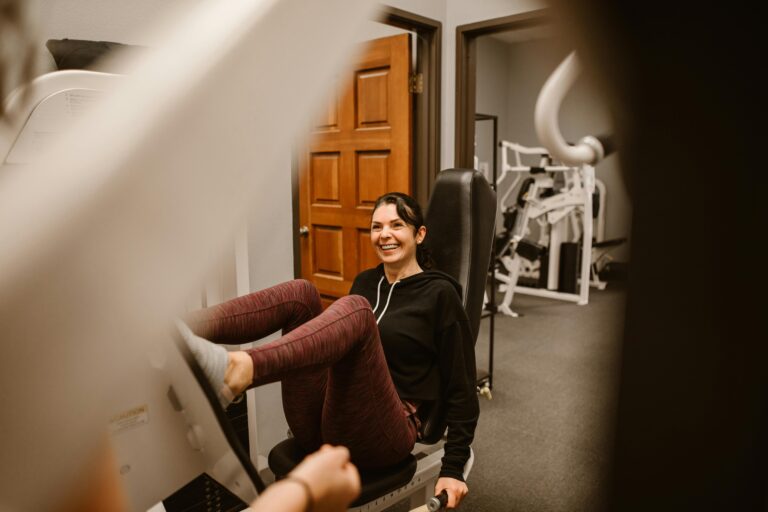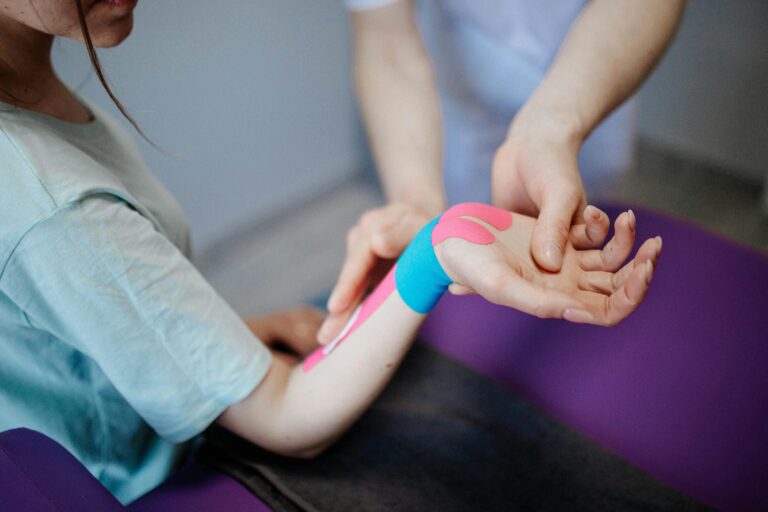Frozen Shoulder and Menopause
If you’re in midlife and suddenly can’t reach overhead, fasten your bra, or sleep without shoulder pain, you’re not alone.
Many women experience frozen shoulder during menopause, a painful, stiff condition that limits movement.
Research suggests hormonal changes, particularly a drop in estrogen, may play a role.
So, what’s happening and what can you do about it?
Let’s break down the connection between menopause, hormones, and shoulder health.
Quick Summary
Frozen shoulder often affects women aged 40–60, especially during perimenopause and menopause.
Estrogen decline can lead to inflammation, stiffness, and collagen changes.
Early movement, hormone balance, and physical therapy help prevent worsening.
Treatments include stretching, injections, and sometimes HRT.
What Is Frozen Shoulder?
Frozen shoulder, or adhesive capsulitis, happens when the connective tissue around your shoulder joint thickens and tightens, restricting movement.
It develops slowly in three phases:
- Freezing: Shoulder pain begins and worsens. Movement becomes limited.
- Frozen: Pain may ease, but stiffness peaks.
- Thawing: Mobility gradually improves.
The entire process can last from 6 months to 2 years, but early intervention makes recovery much faster.
Why Frozen Shoulder Is Common During Menopause
Let’s take a look at why frozen shoulder happens during menopause:
The Hormone Connection
Estrogen helps keep connective tissues flexible and supports collagen production.
When estrogen levels decline during menopause, tissues lose elasticity and become more prone to inflammation and fibrosis (scar tissue formation).
One study found that women using hormone replacement therapy (HRT) were less likely to develop frozen shoulder than those who weren’t.
Other research suggests estrogen may reduce fibrosis and stiffness by acting on special cell receptors (GPER) in shoulder tissue.
Why Perimenopause Matters
Even before menopause officially begins, estrogen levels fluctuate during perimenopause.
These hormonal swings can trigger early shoulder stiffness, inflammation, and discomfort, making frozen shoulder in perimenopause a common experience.
Hormonal changes combined with midlife stress, disrupted sleep, and decreased activity can all amplify the risk of developing perimenopause frozen shoulder.
Other Contributing Factors
Beyond hormones, other midlife factors play a role:
- Thyroid disease or metabolic disorders
- Diabetes or insulin resistance
- Previous shoulder injury or surgery
- Sedentary lifestyle or poor posture
- Autoimmune or inflammatory conditions
Frozen Shoulder vs. Menopause Shoulder Pain
| Feature | Frozen Shoulder (Adhesive Capsulitis) | General Menopause Shoulder Pain |
| Cause | Thickened, inflamed shoulder capsule | Hormonal changes, mild inflammation, muscle stiffness |
| Pain Type | Sharp or aching, worse at night | Dull or generalized ache |
| Range of Motion | Severely limited | Usually preserved |
| Duration | 6–24 months | Intermittent |
| Treatment | Physical therapy, injections, HRT, stretching | Activity, anti-inflammatories, posture correction |
Recognizing the Symptoms of a Frozen Shoulder
Frozen shoulder symptoms can develop slowly and may be mistaken for general stiffness.
Signs to watch for:
- Shoulder pain that worsens at night
- Difficulty lifting or rotating the arm
- Stiffness that limits daily tasks (reaching overhead, fastening a bra)
- Pain when lying on the affected shoulder
If these symptoms persist beyond a few weeks, consult a healthcare professional, early treatment can prevent long-term restriction.
How Frozen Shoulder Is Diagnosed
A physical exam is often enough for diagnosis.
Providers test your active and passive range of motion and may order imaging (X-ray, MRI, or ultrasound) to rule out rotator cuff tears or arthritis.
At Women’s Wellness of Mississippi, we go beyond a standard orthopedic exam.
We evaluate hormonal balance, thyroid health, and inflammation levels to uncover the root cause, not just the symptom.
Treatment Options for Frozen Shoulder in Menopause
Let’s look at some of the treatment options for frozen shoulders during menopause
1. Physical Therapy
The foundation of recovery is gentle movement and targeted stretching.
A physical therapist can design a plan that progressively restores motion without aggravating pain.
2. Anti-Inflammatory Support
Over-the-counter NSAIDs (like ibuprofen) can reduce pain and swelling.
In more severe cases, corticosteroid injections may quickly relieve inflammation and help restore range of motion.
3. Hydrodilatation (Capsular Distension)
This minimally invasive procedure injects saline into the joint capsule to stretch it, often improving mobility in early stages.
4. Hormone Replacement Therapy (HRT)
Estrogen therapy may reduce the risk or severity of frozen shoulder.
Maintaining balanced hormones supports collagen integrity and tissue flexibility.
While HRT isn’t prescribed solely for shoulder pain, it can offer joint benefits for women addressing other menopausal symptoms.
5. Complementary & Lifestyle Therapies
Massage, acupuncture, or myofascial release to ease tightness
Yoga and Pilates for gentle stretching and alignment
Anti-inflammatory nutrition, including omega-3s, leafy greens, and reduced sugar intake
Consistent movement, avoiding total rest keeps blood flow and flexibility up
Home Care Tips
Consistency is key.
These steps can help manage pain and maintain motion:
- Apply heat before stretching to loosen muscles, and ice afterward to reduce soreness.
- Perform pendulum exercises several times daily.
- Maintain posture, avoid rounding shoulders forward.
- Keep blood sugar stable to minimize inflammation.
- Prioritize sleep and stress control, both of which affect hormone balance and recovery.
Prevention Strategies
You can’t always prevent frozen shoulder, but you can lower your risk:
- Stay physically active and do daily arm stretches.
- Address thyroid or blood sugar imbalances early.
- Maintain a healthy weight and posture.
- Seek help promptly if shoulder stiffness begins.
Discuss hormone balance with your provider to support tissue health during menopause.
At Women’s Wellness of Mississippi, we often see how early intervention, both physical and hormonal, prevents mild stiffness from becoming full adhesive capsulitis.
When to See a Specialist
If pain keeps you from sleeping, driving, or getting dressed comfortably, it’s time to seek care.
A personalized plan that integrates movement therapy and hormonal evaluation offers the best long-term outcome.
Our specialists at Women’s Wellness of Mississippi create individualized treatment plans that address both menopause shoulder pain and the hormonal changes behind it.
The Bottom Line: Frozen Shoulder Menopause
Frozen shoulder and menopause often go hand-in-hand, but recovery is absolutely possible.
Addressing inflammation early, supporting hormonal balance, and staying consistent with movement can help restore function and reduce pain.
If your shoulder pain is affecting your quality of life, don’t wait.
Contact Women’s Wellness of Mississippi to explore hormone optimization and treatment options tailored to your stage of life.
FAQs
How to avoid frozen shoulder in menopause?
Staying active and maintaining shoulder mobility is the best way to avoid frozen shoulder during menopause. Gentle daily stretches, good posture, and regular strength training help keep the shoulder capsule flexible. Managing hormone levels, controlling blood sugar, and addressing thyroid or metabolic issues early also reduce your risk.
How to fix frozen shoulder quickly?
There’s no instant cure, but starting physical therapy early is the fastest way to improve mobility and reduce pain. Treatments like corticosteroid injections, hydrodilatation, or targeted stretching can accelerate recovery. Staying consistent with exercises and avoiding complete rest are key to regaining movement faster.
What supplements are good for frozen shoulder?
Supplements that support joint and tissue health include omega-3 fatty acids, collagen peptides, vitamin D, magnesium, and curcumin. These can help reduce inflammation and promote connective tissue repair. Always check with your healthcare provider before starting new supplements, especially if you’re taking other medications.
Does HRT get rid of frozen shoulder?
HRT doesn’t directly cure frozen shoulder, but it may help reduce inflammation and stiffness by supporting tissue elasticity and collagen health. Research suggests women using estrogen therapy have a lower risk of developing frozen shoulder, and those already affected may notice improved recovery when hormone balance is restored.
What causes frozen shoulder during perimenopause?
Fluctuating estrogen levels during perimenopause can affect the connective tissues around the shoulder, making them less flexible and more prone to inflammation. These hormonal shifts, combined with stress, disrupted sleep, or reduced physical activity, can lead to the onset of adhesive capsulitis in midlife women.
Can menopause cause frozen shoulder?
Yes. Menopause can contribute to frozen shoulder because declining estrogen levels impact collagen, joint lubrication, and inflammation control. This makes shoulder tissues stiffer and more susceptible to injury or tightening, especially in women with thyroid issues or metabolic changes.
What are the best exercises for frozen shoulder?
Gentle, consistent movement helps the most. Pendulum swings, wall climbing exercises, towel stretches, and arm circles are effective ways to restore range of motion. It’s important to move within a pain-free range and progress gradually under the guidance of a physical therapist.
How long does frozen shoulder last in menopause?
Recovery typically takes 6 months to 2 years. The timeline depends on how early it’s treated, hormone balance, and adherence to movement therapy. Women who start physical therapy and manage inflammation early tend to recover faster.
Does HRT help with joint pain?
Yes, many women notice less joint pain after starting hormone replacement therapy. Estrogen supports joint lubrication and reduces inflammation, which can ease stiffness and discomfort in the shoulders, hips, and knees. However, results vary, so it’s best to discuss your options with your healthcare provider.







